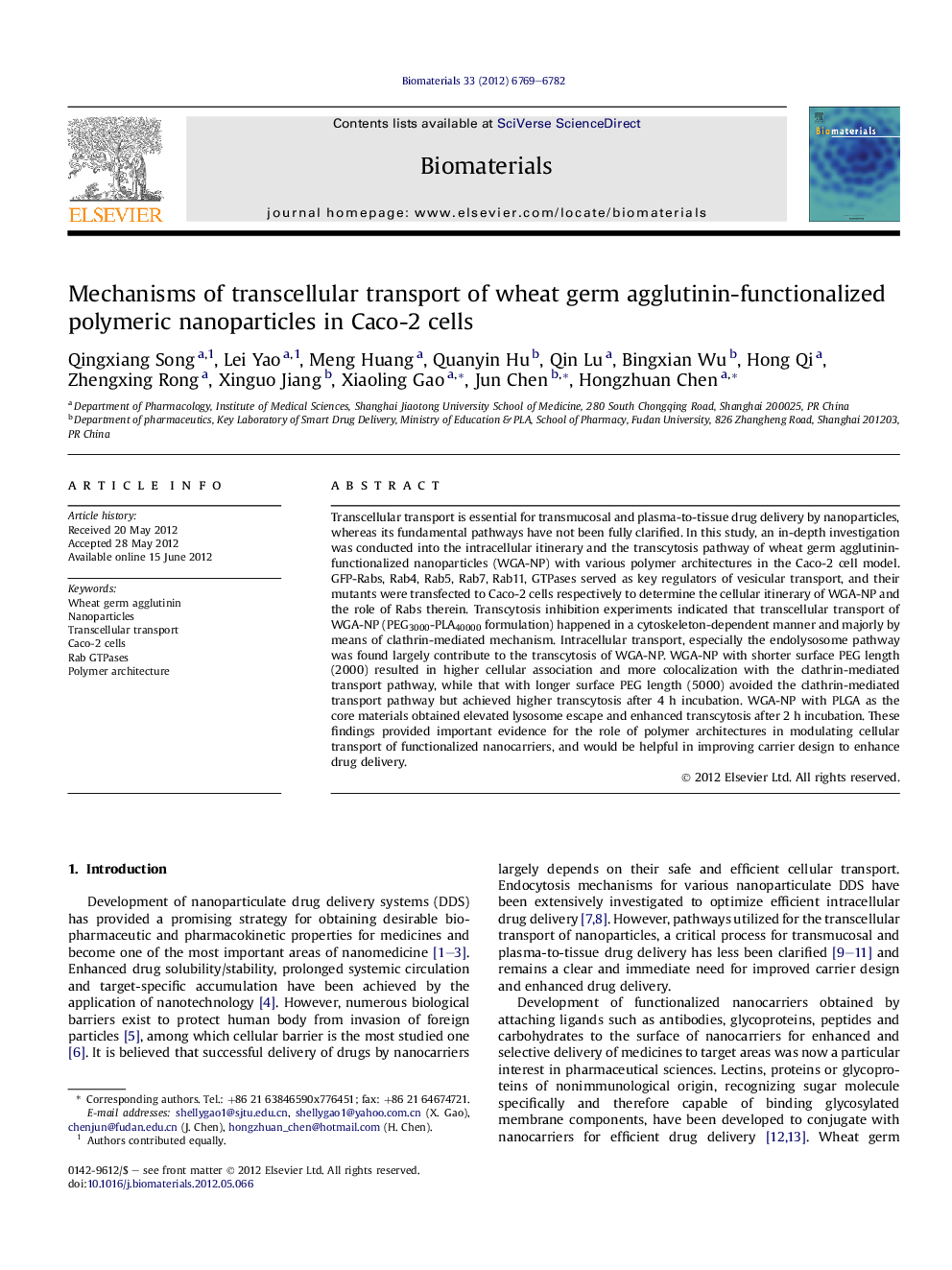| Article ID | Journal | Published Year | Pages | File Type |
|---|---|---|---|---|
| 10229471 | Biomaterials | 2012 | 14 Pages |
Abstract
Transcellular transport is essential for transmucosal and plasma-to-tissue drug delivery by nanoparticles, whereas its fundamental pathways have not been fully clarified. In this study, an in-depth investigation was conducted into the intracellular itinerary and the transcytosis pathway of wheat germ agglutinin-functionalized nanoparticles (WGA-NP) with various polymer architectures in the Caco-2 cell model. GFP-Rabs, Rab4, Rab5, Rab7, Rab11, GTPases served as key regulators of vesicular transport, and their mutants were transfected to Caco-2 cells respectively to determine the cellular itinerary of WGA-NP and the role of Rabs therein. Transcytosis inhibition experiments indicated that transcellular transport of WGA-NP (PEG3000-PLA40000 formulation) happened in a cytoskeleton-dependent manner and majorly by means of clathrin-mediated mechanism. Intracellular transport, especially the endolysosome pathway was found largely contribute to the transcytosis of WGA-NP. WGA-NP with shorter surface PEG length (2000) resulted in higher cellular association and more colocalization with the clathrin-mediated transport pathway, while that with longer surface PEG length (5000) avoided the clathrin-mediated transport pathway but achieved higher transcytosis after 4Â h incubation. WGA-NP with PLGA as the core materials obtained elevated lysosome escape and enhanced transcytosis after 2Â h incubation. These findings provided important evidence for the role of polymer architectures in modulating cellular transport of functionalized nanocarriers, and would be helpful in improving carrier design to enhance drug delivery.
Keywords
Related Topics
Physical Sciences and Engineering
Chemical Engineering
Bioengineering
Authors
Qingxiang Song, Lei Yao, Meng Huang, Quanyin Hu, Qin Lu, Bingxian Wu, Hong Qi, Zhengxing Rong, Xinguo Jiang, Xiaoling Gao, Jun Chen, Hongzhuan Chen,
